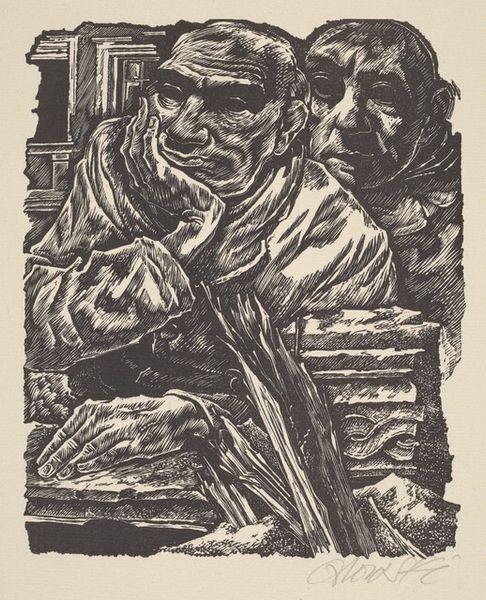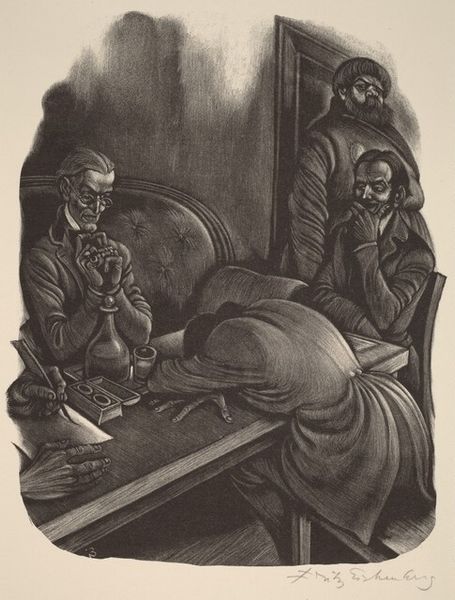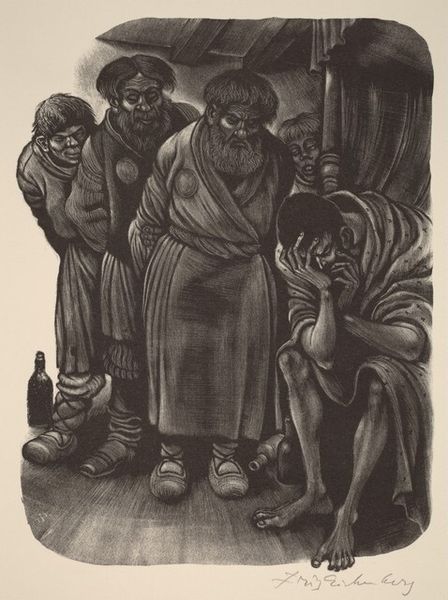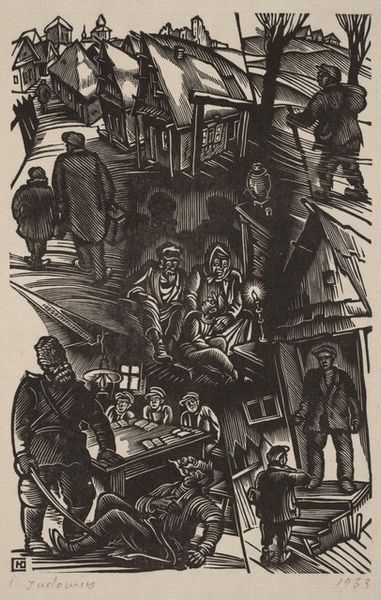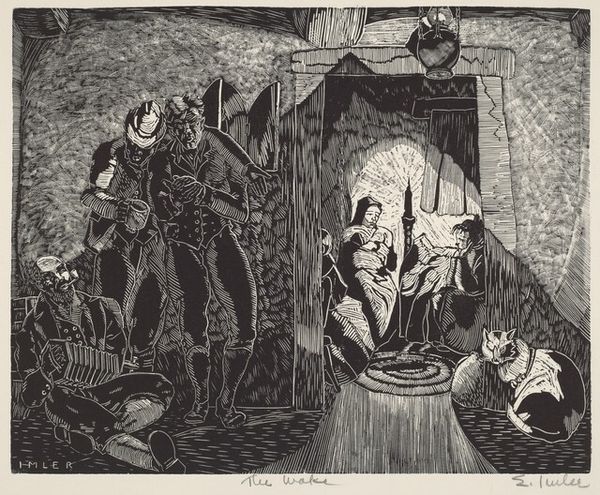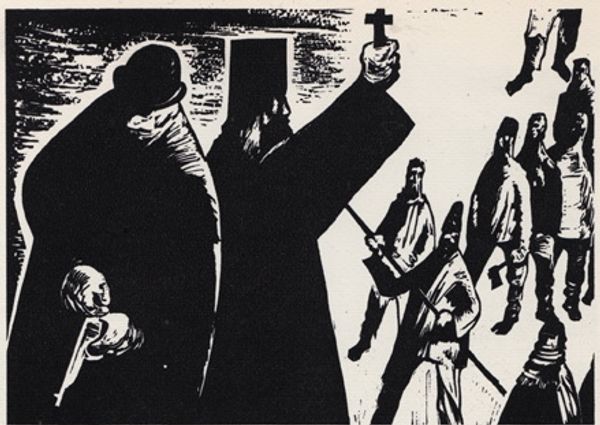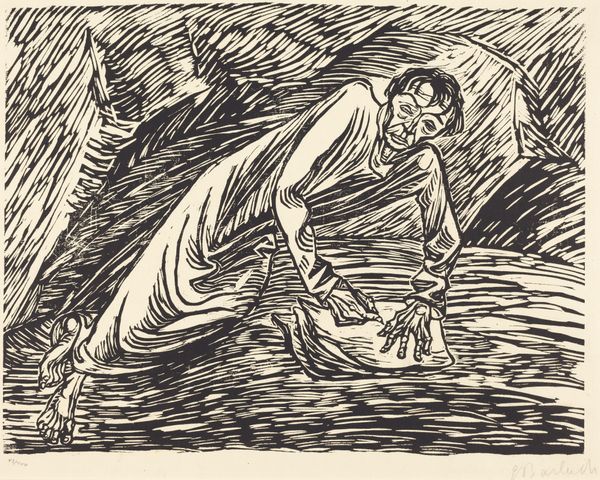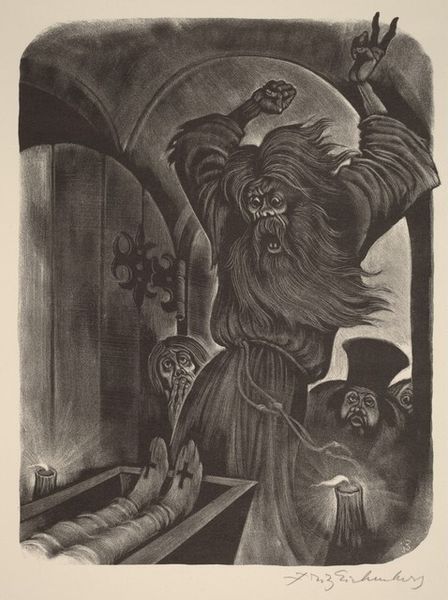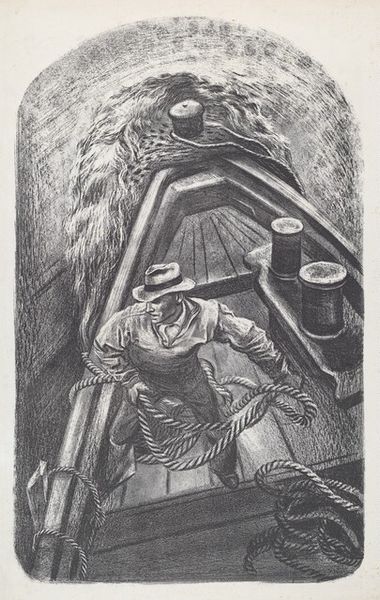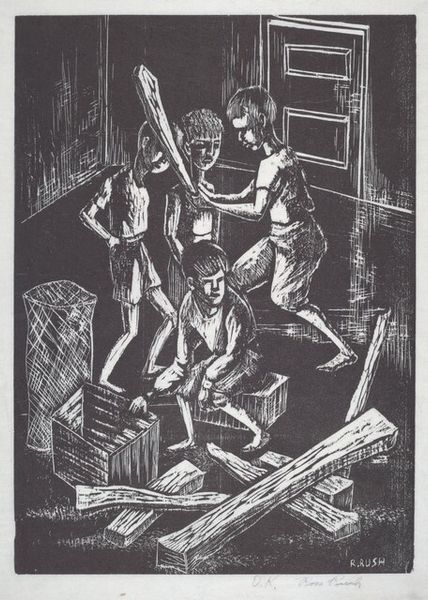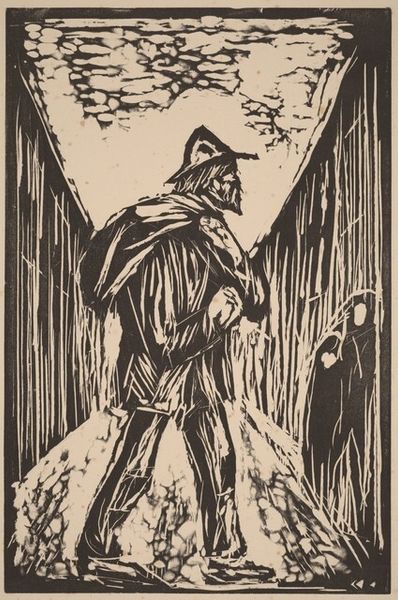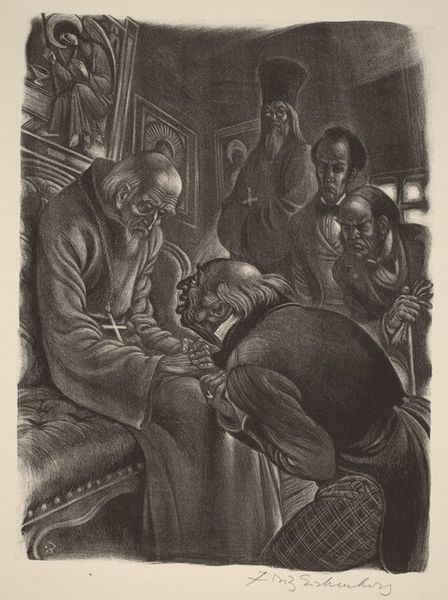
print, woodcut
# print
#
woodcut
#
cityscape
#
genre-painting
#
realism
Dimensions: image: 270 x 200 mm (irregular) sheet: 416 x 280 mm (folded) sheet: 444 x 280 mm (unfolded)
Copyright: National Gallery of Art: CC0 1.0
Curator: What strikes me immediately is the stark contrast. It’s almost theatrical, like a stage lit for a very grim performance. Editor: That’s an interesting reading. This is "Street Music" by Harry Rein, created between 1935 and 1943. It’s a woodcut print, showcasing a street scene with clear social commentary, particularly relevant to its time of creation in America. Curator: Yes, the deliberate use of black and white emphasizes the division between the classes. You have the couple in their fine coats juxtaposed against the seated musician, presumably struggling. It brings to the fore questions of economic inequality and social indifference during the Depression era. Editor: Precisely. Looking at the woodcut itself, you can appreciate the labor involved. Each line carved to create this stark visual statement reflects the hand of the artist grappling with the materials, thinking about how the physical process mirrors the societal divisions portrayed. The deep blacks are not just about aesthetics; they are about the material conditions that produced them and the image. Curator: I agree, and the artist's choice of subject also directs the artwork’s engagement within the social sphere. The musician represents the working class trying to survive in a capitalist structure that has clearly failed him, while the couple appear entirely absorbed in their own reality, indifferent to his existence. This reflects how economic policies can exacerbate existing power dynamics. Editor: And the print medium makes it reproducible, a medium affordable to a wider audience. So Rein is making work both *about* social struggle, and *accessible* amidst that struggle. The starkness lends itself to this mass distribution. Curator: Exactly! It becomes a form of protest itself. What could have seemed invisible is now visible; the economic imbalances brought to light. I think "Street Music" encapsulates a vital socio-political perspective. Editor: For me, it underlines how artistic labor can capture, challenge, and be consumed within the very system it critiques, a point where social concern and material reality tightly braid. Curator: Thank you; the way it reveals class struggles through its aesthetic presentation does offer a powerful reflection on systemic inequality and the shared experiences of the disenfranchised during that period. Editor: Absolutely. Analyzing its construction helps us comprehend the complex intersection between material reality and societal commentary that makes it such a compelling and pertinent work.
Comments
No comments
Be the first to comment and join the conversation on the ultimate creative platform.
